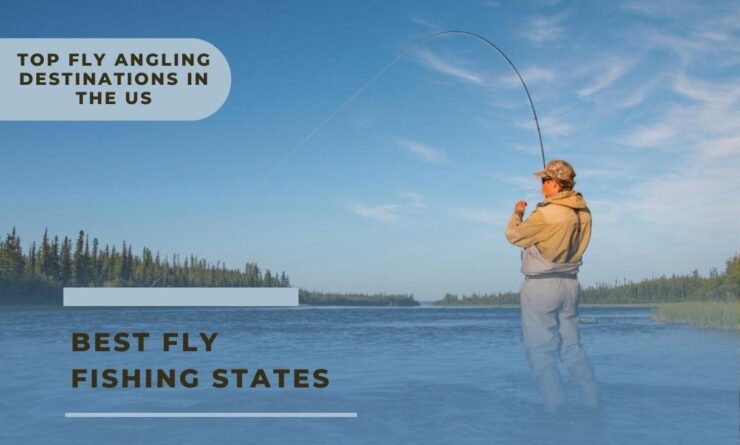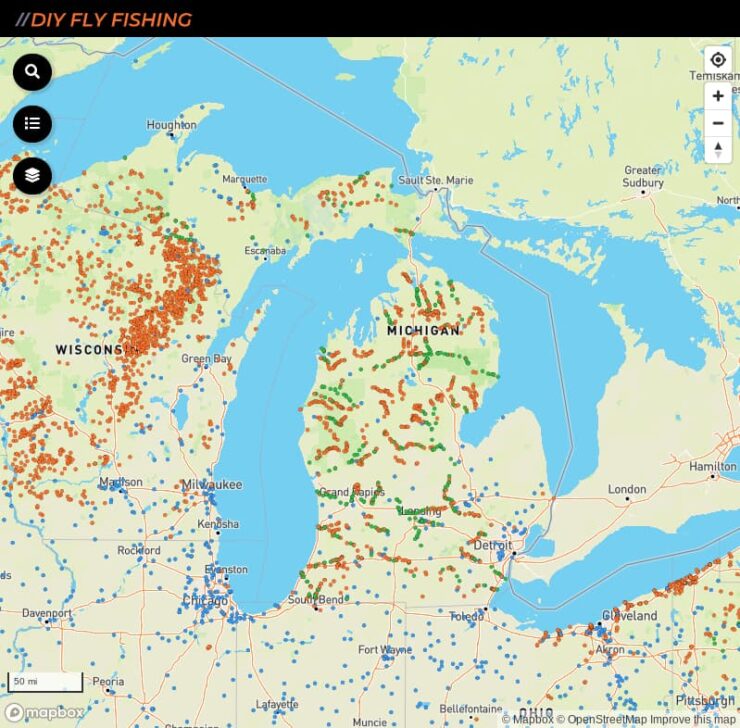The United States is a treasure trove for fly anglers, with diverse fishing opportunities across the country. Some states have become synonymous with fly fishing, producing some of the most skilled anglers and offering unique fishing experiences.
This article explores the top fly fishing states, the challenges that their waterways present, and the notable anglers that have emerged from these regions.
| Rank | State | Key Species | Notable Locations | Unique Challenges | Famous Anglers |
|---|---|---|---|---|---|
| 1 | Montana | Trout, Salmon | Yellowstone River, Bighorn River, Gallatin River | Varied waterways, heavily pressured fish, weather | Norman Maclean, Bud Lilly, Dan Bailey, Joe Brooks |
| 2 | Florida | Bonefish, Tarpon, Redfish, Snook | Tampa Bay, Everglades, Florida Keys | Strong winds, poor visibility, fishing pressure | Lefty Kreh, Steve Huff, Jose Wejebe, Flip Pallot |
| 3 | Michigan | Trout, Steelhead, Salmon, Muskie | Au Sable River, Upper Manistee River, Great Lakes | Dense woods, tight casting conditions, hatches | Charles F. Adams, Arnold Gingrich, Bob Linsenman |
| 4 | Alaska | Salmon, Trout, Char, Grayling | Kenai River, Bristol Bay, Copper River | Remote locations, short seasons, extreme weather | Bob Nauheim, Andy Puyans, Ken Morrow |
| 5 | Oregon | Steelhead, Trout, Salmon | Deschutes River, Rogue River, North Umpqua River | Challenging steelhead fishing, diverse habitats | Lani Waller, Ed Ward, April Vokey |
| 6 | California | Steelhead, Trout, Salmon | McCloud River, Sacramento River, Trinity River | Difficult steelhead fishing, varied ecosystems | Bill Schaadt, Gary Borger, Yvon Chouinard |
| 7 | Washington | Steelhead, Salmon, Trout | Olympic Peninsula, Skagit River, Yakima River | Elusive steelhead, unpredictable weather | Dylan Tomine, Jack Mitchell, Dec Hogan |
| 8 | Idaho | Trout, Salmon, Steelhead | Henry’s Fork, Snake River, Silver Creek | Varied landscapes, rapidly changing conditions | Rene Harrop, Mike Lawson, Marty Howard |
| 9 | Wyoming | Trout, Grayling | Snake River, Green River, North Platte River | High elevations, rugged terrain, harsh weather | Jack Dennis, Pat Dorsey, George Anderson |
| 10 | Colorado | Trout, Kokanee Salmon | Frying Pan River, South Platte River, Gunnison River | Crowded fisheries, challenging weather | John Gierach, Ed Engle, Larry King |
- If you want to check more articles on Fishing look here.
1. Michigan: Home to Diverse Fly Fishing Opportunities
Michigan’s abundant trout waters, Great Lake’s steelhead and salmon rivers, and warm water fisheries for bass, pike, and muskie make it a fly fishing paradise. Anglers from Michigan are often considered some of the best fly fishermen globally, thanks to the challenges presented by the state’s diverse waterways.
- Notable Michigan Anglers: Charles F. Adams, Arnold Gingrich, Bob Linsenman, and Kelly Galloup
2. Florida: The Hub of Saltwater Fly Fishing
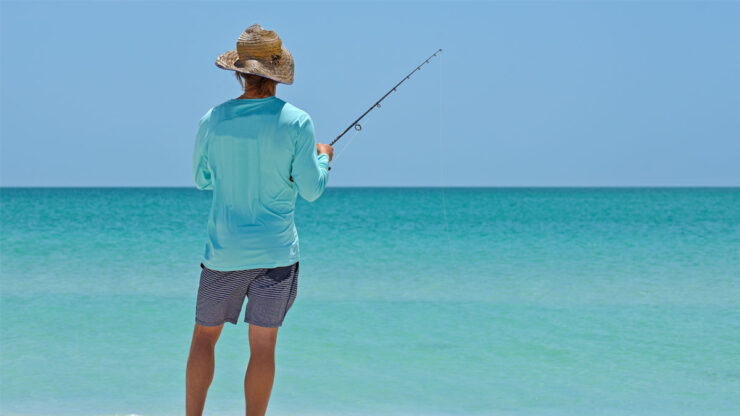
Florida is the heart of saltwater fly fishing in the US, with a wide variety of saltwater species available, including bonefish, tarpon, redfish, snook, and barracuda. The state’s anglers must overcome numerous natural and manmade challenges, making them exceptionally skilled in adapting to various conditions.
- Notable Florida Anglers: Lefty Kreh, Steve Huff, Jose Wejebe, and Flip Pallot
3. Montana: The Treasure State’s Trout Haven
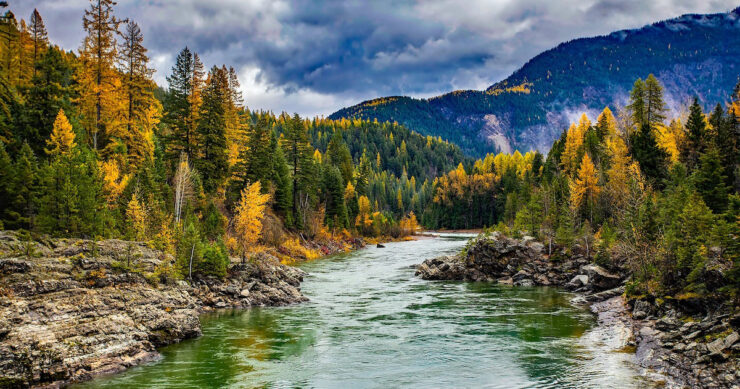
Montana is a fly fishing haven, with nearly 170,000 miles of rivers, streams, and spring creeks. The state’s wild trout fisheries attract anglers from all over the world. Montana’s diverse waterways and heavily pressured trout populations have shaped its anglers into some of the most skilled fishermen and women in the country.
- Notable Montana Anglers: Norman Maclean, Bud Lilly, Dan Bailey, Joe Brooks, and Thomas McGuane
4. California, Oregon, and Washington: The Winter Steelhead Challenge
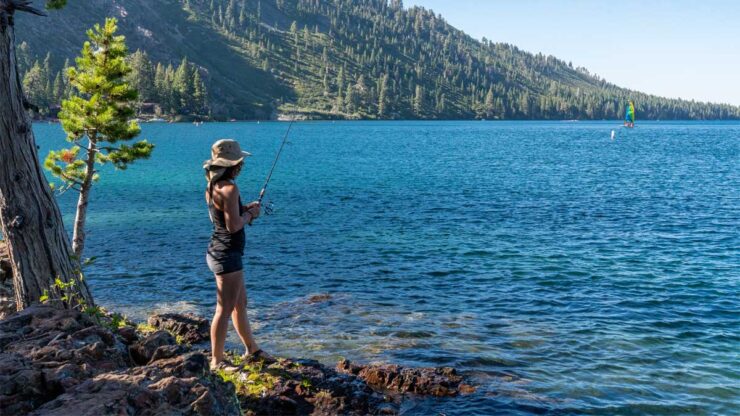
The Pacific Coast states of California, Oregon, and Washington are home to some of the most challenging fly fishing experiences in North America – winter steelhead. The elusive nature of these fish and the difficult conditions in the region have led to the development of highly skilled fly anglers in these states.
- Notable Anglers: Bill Schaadt, Lani Waller, Ed Ward, and Dylan Tomine
Frequently Asked Questions about Fly Fishing
1. What is fly fishing?
Fly fishing is a specialized method of angling that uses a lightweight artificial fly to catch fish. The fly is cast using a fly rod, reel, and specialized weighted line.
2. How is fly fishing different from regular fishing?
Fly fishing differs from traditional fishing methods primarily due to the use of lightweight artificial flies, which imitate insects or other natural prey, rather than heavier lures or bait.
The casting technique is also different, as fly anglers use the weight of the line to cast the fly, rather than relying on the weight of a lure or bait.
3. What types of fish can be caught using fly fishing?
Fly fishing can be used to target a wide variety of fish species, including trout, salmon, steelhead, bass, pike, muskie, and various saltwater species such as bonefish, tarpon, redfish, and snook.
4. Is fly fishing difficult to learn?
Fly fishing can be more challenging to learn than traditional fishing methods due to the unique casting technique and the need to understand fish behavior, habitat, and feeding patterns.
However, with practice and dedication, many anglers find fly fishing to be a rewarding and enjoyable pursuit.
5. What equipment do I need to start fly fishing?
At a minimum, you will need a fly rod, reel, fly line, leader, tippet, and flies. Additional accessories like a fly fishing vest, waders, boots, and various tools can also be helpful.
6. Where can I learn to fly fish?
There are many resources available for learning to fly fish, including local fly fishing clubs, online tutorials, books, and instructional videos. Many fly shops also offer classes or guided trips with experienced instructors.
7. What states are known for producing skilled fly anglers?
While great fly anglers can be found in nearly every state, some states with a particularly strong history of producing skilled fly fishermen and women include Michigan, Florida, Montana, California, Oregon, and Washington.
8. How can I improve my fly fishing skills?
Improving your fly fishing skills takes time, practice, and dedication. Spending time on the water, learning from experienced anglers, and staying adaptable to changing conditions will all contribute to your growth as a fly angler.
9. How can I help protect and preserve our waterways for future generations of fly anglers?
Fly anglers can contribute to the protection and preservation of our waterways by practicing responsible fishing practices, advocating for clean water and healthy ecosystems, and supporting organizations that work to protect and restore aquatic habitats.
Additionally, passing on your knowledge and skills to future generations helps to ensure that the tradition of fly fishing continues to thrive.
10. What are some notable fly anglers from various states?
Some notable fly anglers include Charles F. Adams and Kelly Galloup from Michigan, Lefty Kreh and Flip Pallot from Florida, Norman Maclean and Bud Lilly from Montana, and Bill Schaadt and Lani Waller from the Pacific Coast states.
Conclusion: It’s All Home Water
In the end, it isn’t necessarily about which state has the best fly anglers. What matters is that we learn from the dedication and love for the sport that these great fly anglers demonstrate.
We have a responsibility to protect our waterways, pass on our knowledge and skills, and speak out about environmental hazards that threaten our way of life. This will ensure that every state continues to have great fishing and great fly anglers for generations to come.

